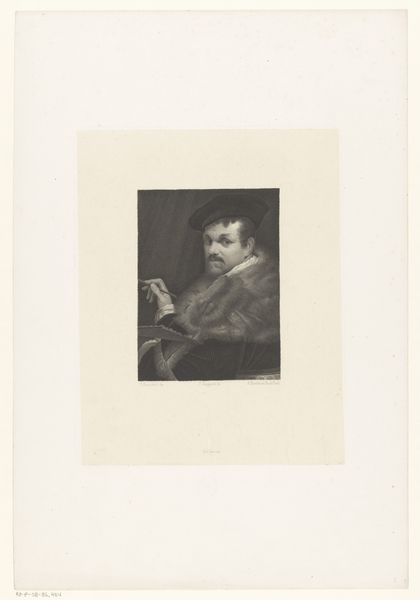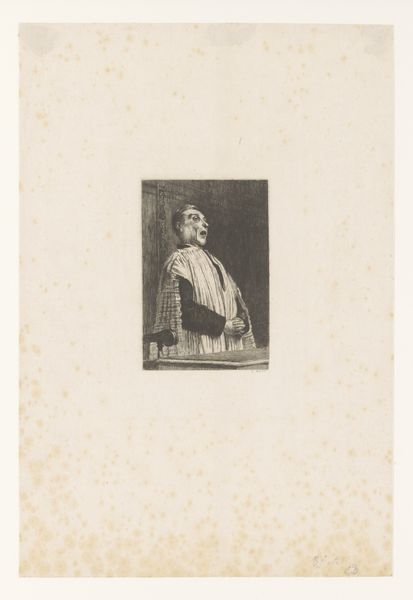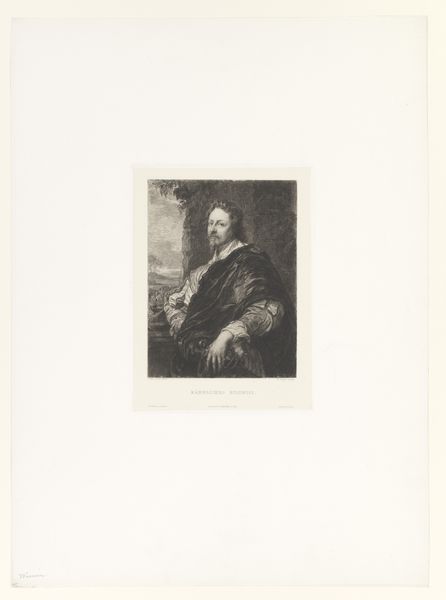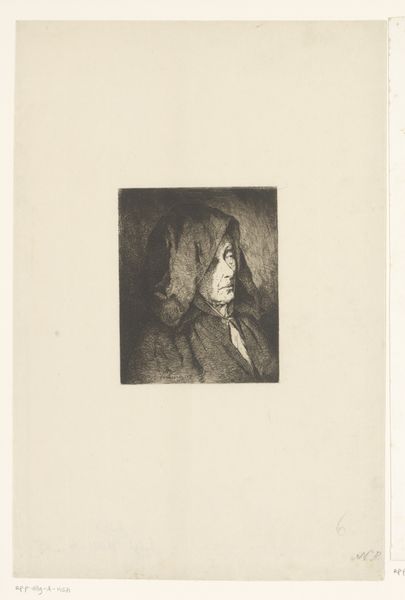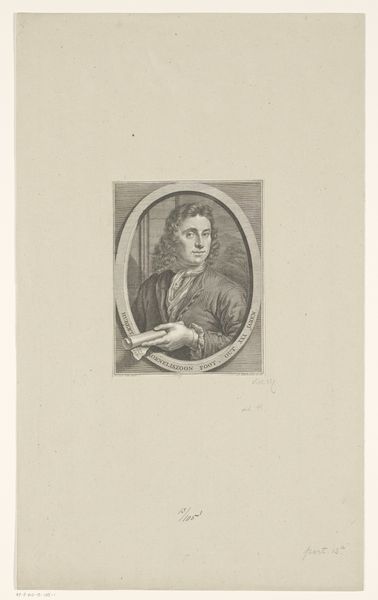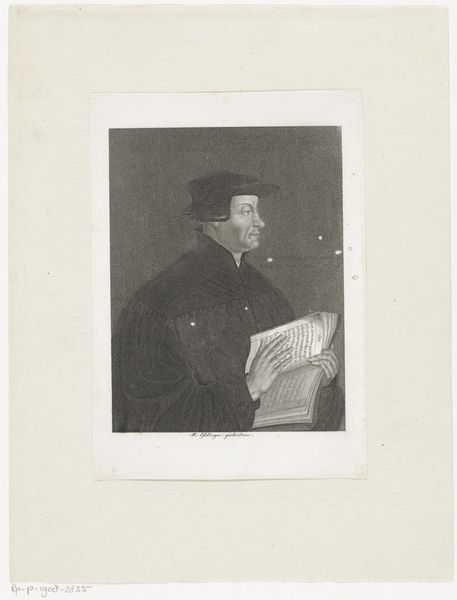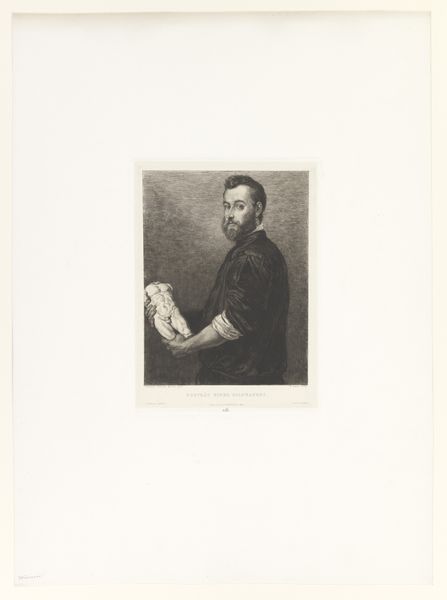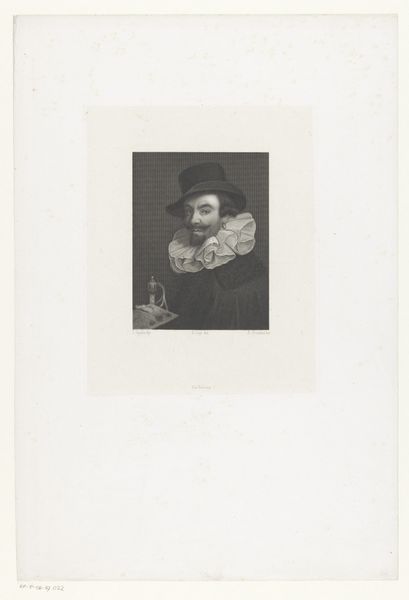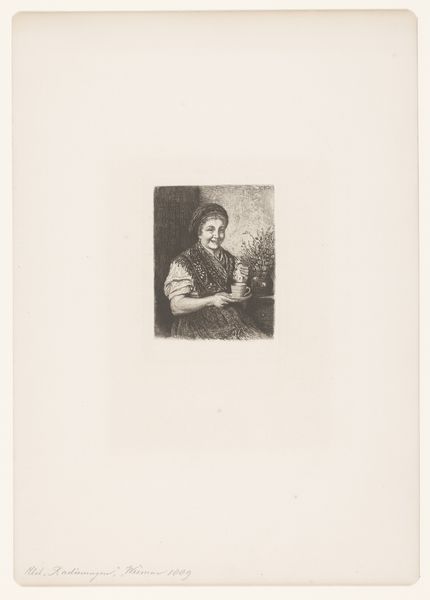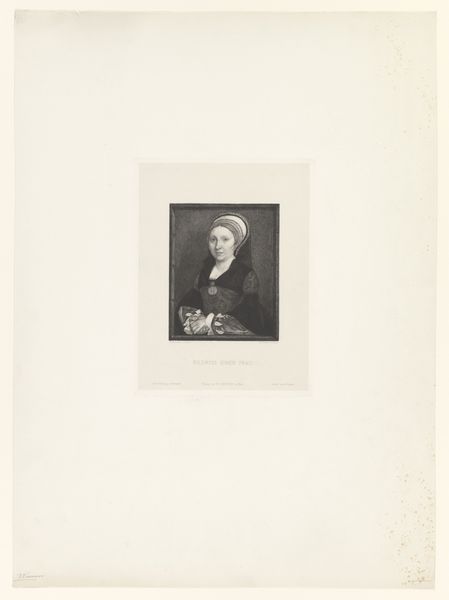
Dimensions: height 454 mm, width 316 mm
Copyright: Rijks Museum: Open Domain
Curator: Here we have a print, an engraving actually, created sometime between 1867 and 1874 by Adolf Carel Nunnink. The work is called "Portret van Florentius Schuyl." Editor: It's so somber, isn’t it? The man has this heavy, almost melancholic air about him. The stormy background just amplifies the mood. Curator: Indeed. Consider, though, the conventions of portraiture at the time. Such depictions were intended to convey status and intellect. Florentius Schuyl was a prominent physician and botanist. The portrait aimed to reflect his respected position. Editor: Still, the power dynamics are palpable. Who was able to have their portrait engraved and circulated? What statement did this portrait make within Dutch society at that time, in terms of access and privilege? Curator: It certainly speaks to Schuyl’s elevated social standing. Prints like this one were often commissioned by or for the subject to circulate amongst colleagues and admirers, solidifying professional networks and reputations. Note the subtle cues. The books barely visible in the background are a classic signifier of learning and cultivation. Editor: And his gaze… is it my imagination, or does it hold a slight challenge? Or perhaps it's just weariness from having to pose? I wonder how someone outside that inner circle, perhaps a patient from a lower social class, would interpret this image. Curator: The realism that’s apparent might invite multiple readings based on social perspectives. Nunnink successfully translated the tradition of Baroque portraiture to a later era, while retaining elements of psychological insight. Editor: What interests me, also, is the agency of the sitter. How complicit was Schuyl himself in crafting this specific image of himself? These things always are an act of collaborative authorship. Curator: A collaboration intended to present a very particular version of the man to the world. Viewing it today allows us to dissect not just individual representation, but also the role of portraits within systems of power and social visibility. Editor: Definitely. It reminds us that portraits, even those seemingly straightforward, are always ideologically loaded, revealing as much about the society that produced them as they do about the sitter themselves.
Comments
No comments
Be the first to comment and join the conversation on the ultimate creative platform.
